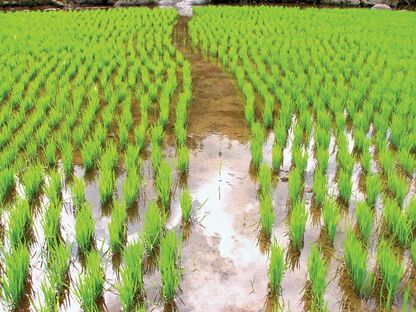Submergence: различия между версиями
м |
|||
| Строка 7: | Строка 7: | ||
Submergence - going under the surface of water or liquid; putting something or make something go under the surface of water or liquid.<ref>https://www.oxfordlearnersdictionaries.com/definition/american_english/submerge?q=submerge - дата обращения: 05.10.2021</ref> | Submergence - going under the surface of water or liquid; putting something or make something go under the surface of water or liquid.<ref>https://www.oxfordlearnersdictionaries.com/definition/american_english/submerge?q=submerge - дата обращения: 05.10.2021</ref> | ||
| − | Submergence can be defined on the basis of duration, depth, and frequency. Two types of environment cause submergence: flash flooding and deepwater. Flash flood submergence is defined by water levels rising rapidly and plants remaining submerged for 1–2 weeks. Deepwater submergence is defined by water depths greater than 100 cm persisting for months. <ref>Kannan E., Paliwal A., Sparks A. Spatial and Temporal Patterns of Rice Production and Productivity // The Future Rice Strategy for India | + | Submergence can be defined on the basis of duration, depth, and frequency. Two types of environment cause submergence: flash flooding and deepwater. Flash flood submergence is defined by water levels rising rapidly and plants remaining submerged for 1–2 weeks. Deepwater submergence is defined by water depths greater than 100 cm persisting for months. <ref>Kannan E., Paliwal A., Sparks A. Spatial and Temporal Patterns of Rice Production and Productivity // The Future Rice Strategy for India, 2017.</ref> |
==Пример использования термина на английском языке== | ==Пример использования термина на английском языке== | ||
| − | 1) Hydrologists use the term submergence or piezometric head when referring to the submergence depth below a free-water surface.<ref>Bleam W., Bleam W. Chapter 2 – Chemical Hydrology // Soil and Environmental Chemistry | + | 1) Hydrologists use the term submergence or piezometric head when referring to the submergence depth below a free-water surface.<ref>Bleam W., Bleam W. Chapter 2 – Chemical Hydrology // Soil and Environmental Chemistry, 2017.</ref> |
| − | 2) Submergence brings various changes in soils i.e. physical, biological and chemical, which are usually advantageous for the growth and nutrition of rice.<ref>Dhaliwal S. S. | + | 2) Submergence brings various changes in soils i.e. physical, biological and chemical, which are usually advantageous for the growth and nutrition of rice.<ref>Dhaliwal S. S. et al. Dynamics and transformations of micronutrients in agricultural soils as influenced by organic matter build-up: A review // Environ. Sustain. Indic. 2019. Т. 1–2.</ref> |
==Перевод использования на русском языке== | ==Перевод использования на русском языке== | ||
Версия 07:00, 3 ноября 2021

Затопление или погружение под воду
Затопление - Покрытие территории водой в период половодья или паводков[2]
Определение на английском
Submergence - going under the surface of water or liquid; putting something or make something go under the surface of water or liquid.[3]
Submergence can be defined on the basis of duration, depth, and frequency. Two types of environment cause submergence: flash flooding and deepwater. Flash flood submergence is defined by water levels rising rapidly and plants remaining submerged for 1–2 weeks. Deepwater submergence is defined by water depths greater than 100 cm persisting for months. [4]
Пример использования термина на английском языке
1) Hydrologists use the term submergence or piezometric head when referring to the submergence depth below a free-water surface.[5]
2) Submergence brings various changes in soils i.e. physical, biological and chemical, which are usually advantageous for the growth and nutrition of rice.[6]
Перевод использования на русском языке
1) Гидрологи используют термин пьезометрический напор, когда речь идет о глубине погружения ниже поверхности свободной воды.
2) Затопление приводит к различным изменениям в почвах, в том числе физическим, биологическим и химическим, которые обычно благоприятны для роста и питания риса.
Список литературы
- ↑ https://www.britannica.com/plant/rice - дата обращения: 05.10.2020
- ↑ https://68.mchs.gov.ru/deyatelnost/poleznaya-informaciya/vnimanie-pavodok/chto-takoe-pavodok/terminy-i-opredeleniya/terminy-i-opredeleniya - дата обращения 05.10.2020
- ↑ https://www.oxfordlearnersdictionaries.com/definition/american_english/submerge?q=submerge - дата обращения: 05.10.2021
- ↑ Kannan E., Paliwal A., Sparks A. Spatial and Temporal Patterns of Rice Production and Productivity // The Future Rice Strategy for India, 2017.
- ↑ Bleam W., Bleam W. Chapter 2 – Chemical Hydrology // Soil and Environmental Chemistry, 2017.
- ↑ Dhaliwal S. S. et al. Dynamics and transformations of micronutrients in agricultural soils as influenced by organic matter build-up: A review // Environ. Sustain. Indic. 2019. Т. 1–2.